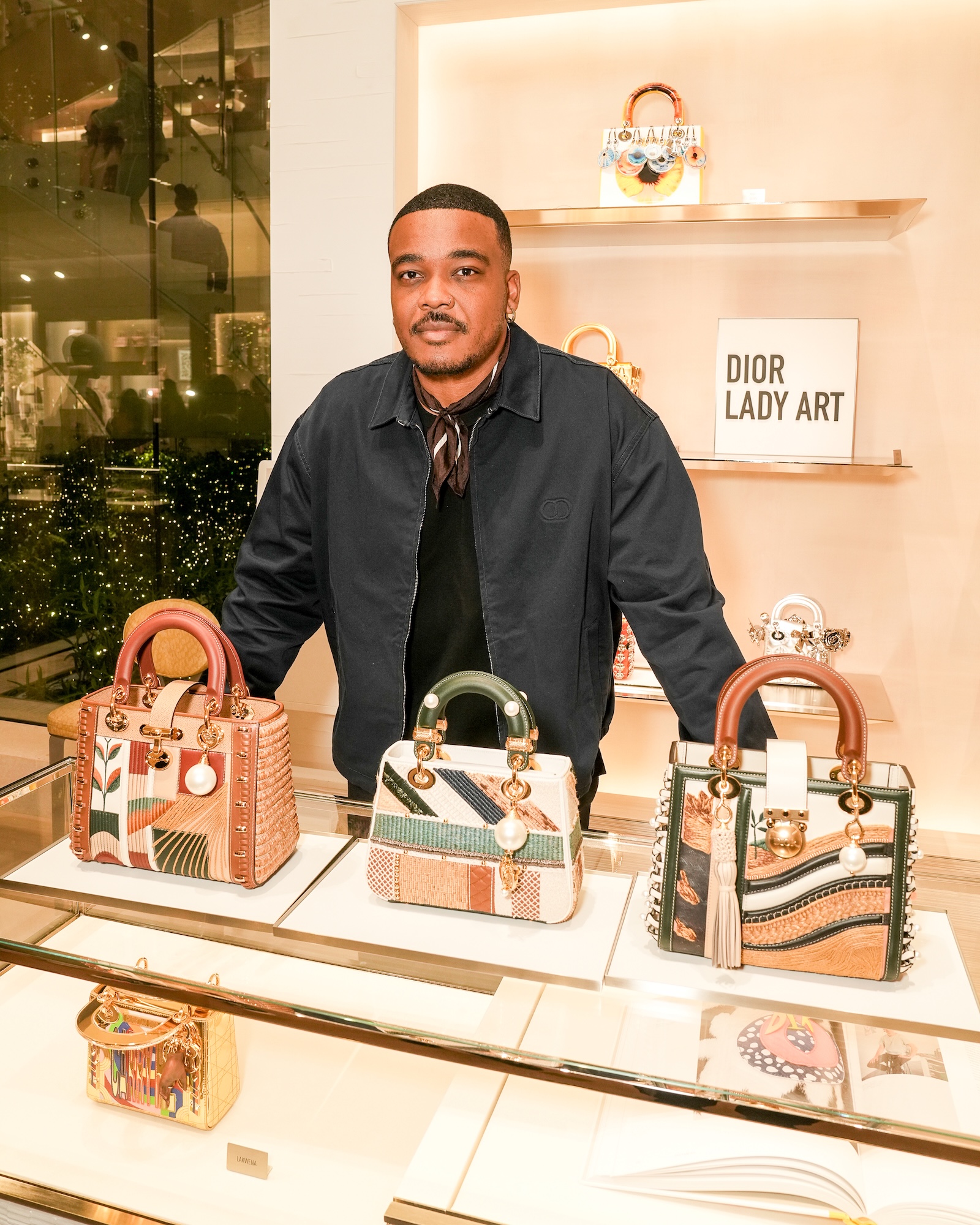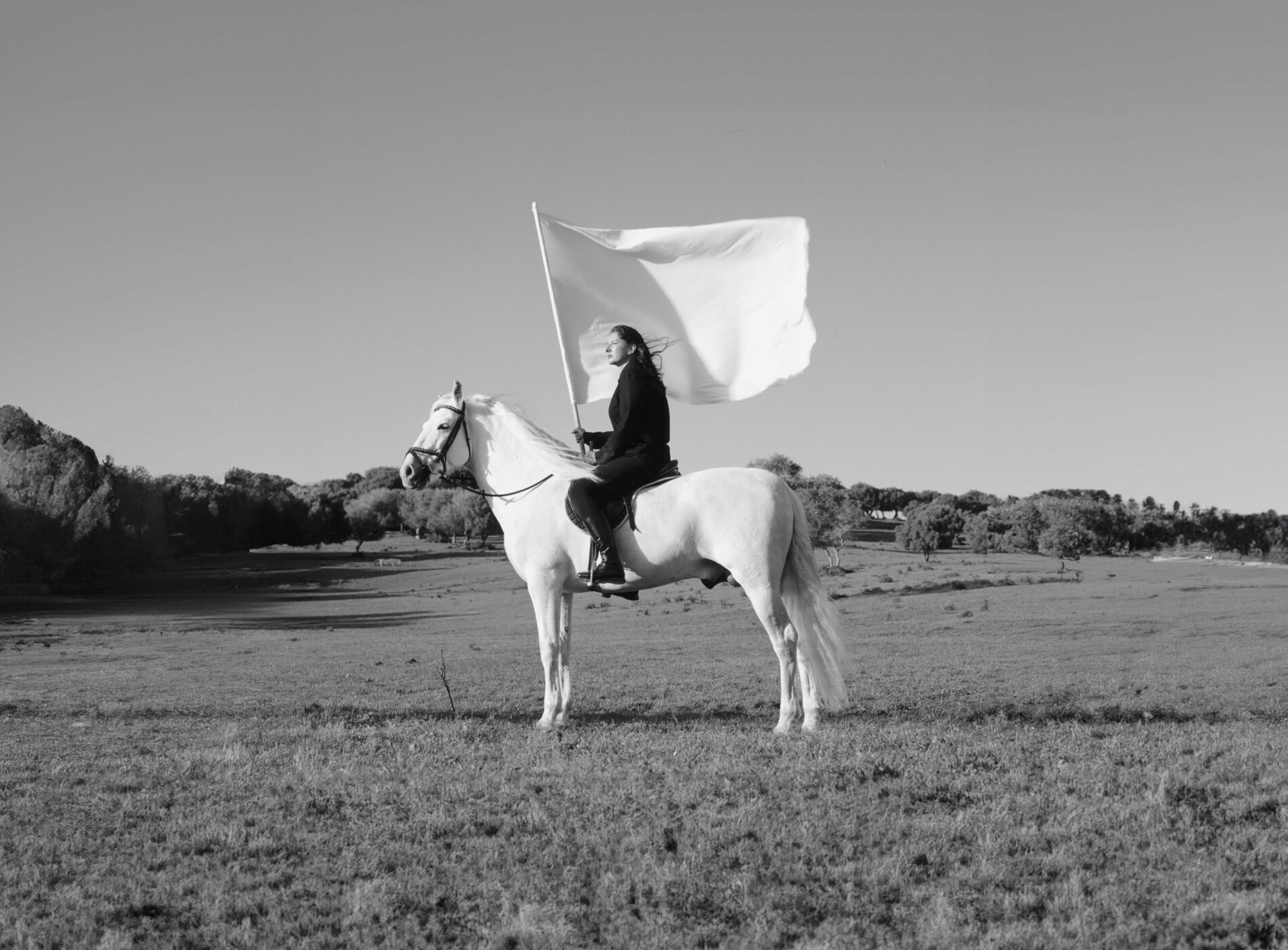

[**GLOBALISTO**](https://www.facebook.com/pg/Globalisto/about/?ref=page_internal) kimono and jewelry, [**RÉPUBLIQUE JOSEPH**](https://republiquejoseph.com/) sweatshirt and shoes, [**SANDRO**](https://us.sandro-paris.com/en/homepage) pants, and talent’s own sunglasses.
In a somewhat reductive way, house music’s canon is often regarded as a movement radiating from the transatlantic metropolises and countries which have created and cultivated its popularity; Motor City, Windy City, and NYC on one end, London, Paris, Ibiza and Berlin on the other. Kwaito, conversely, is a subgenre of house originating from Johannesburg, South Africa townships during the apartheid and post-apartheid ‘90s. Peppered with lyrics that document lifestyle with struggle, kwaito is distinct for refraining from the typical 125-130BPM speed of house, and opting for a much more unbuttoned groove to the tune of 100-105BPM. Slow and steady wins the race.
“Music was weaponized when I grew up in South Africa during the Apartheid days,” says Mo Laudi, DJ, sound/fashion designer, and all-around cultural auteur. “We used music to fight the police.” Not unlike the Belleville Three or Underground Resistance crew in ‘80s Detroit generating radical political action through their militancy and emerging sound, soon to be dubbed “techno,” Laudi follows suit by presenting music as one element for catalysts of change and experimentation. “Music still has this power. You can feel the tone, thread, and aggressiveness with the melodies,” he states. “There’s a message which slides through with hope, optimism of a better future—I feel that with art and culture, that fight within what I do and with my music.”
Laudi is in Paris, his HQ for several years, spending the aughts across The Channel in London. He’s just gotten back from playing Les Plages Électroniques, a dance-music festival in Cannes. Calling from his studio space in the French capital, Laudi’s dulcet voice is a deep baritone, an equal brew of self-assurance, insight, and calm. He’s enjoying some respite after weeks performing at Nothing But the Wax Festival, the Venice Biennale, and numerous clubs on the Riviera and Iberian Peninsula. On the decks, there might be a little mix of kwaito, or a break into some of Laudi’s singles, like “Por Cima,” featuring Flavia Coelho, or his feature on Jerome Sydenham & Fatima Njai’s, “Hometown Girl.” For Laudi, “Expressing that lineage of the drums, the rhythms, the pop culture, is what South Africa is to me.”


[**BALLY**](https://www.bally.com/en_us/home) coat, [**KENZO**](https://www.kenzo.com/us/en/home) jacket, [**AZZARO**](https://www.azzaro.com/us) turtleneck, [**SANDRO**](https://us.sandro-paris.com/en/homepage) pants, and [**GLOBALISTO**](https://www.facebook.com/pg/Globalisto/about/?ref=page_internal) jewelry.
Indeed, the Polokwane DJ is lauded as being one of the first selectors to push Afro-house sounds on European dancefloors. Commenting on his initial impression of the London club scene, “Almost every three years there was a new genre that was popping up,” remembers Laudi. “When I arrived, there was drum n’ bass and jungle, which was informed by Jamaican migration.” Nonetheless, he noticed a void and vacuum to fill. Laudi threw a weekly party at venues and clubs all over town, and when he eventually moved to Paris, a new party, Globalisto, spawned.
In 2013, he co-founded Sharp Sharp Johannesburg, a music festival hosted at the then-recently opened La Gâité Lyrique, a digital arts and music center in the city’s 3rd Arrondissement. While Laudi is an undeniable torchbearer introducing northern ears with southern pulses, he can’t help but feel surprised. “It’s fascinating how old school kwaito has become trendy in Europe,” he admits.
Gqom tracks and bespoke club nights are only a few slices of Mo Laudi’s pie. His personal philosophies on life are intrinsically based on shared and/or exchanged knowledge, worldbuilding, and reverence for the past as means to envision a better future. “That’s what the future is, having all these different artists from different regions of the world be free to move around,” he asserts. “It changes music, getting inspired by different cultures. That’s how the future becomes: by sharing.” This arrives in the form of multidisciplinary practices from sound design to fashion.
Beginning this past June and running until late September, the Centre Pompidou in Paris is exhibiting a retrospective on Franco-South African artist, Ernest Mancoba. Laudi has produced a sound installation to complement the show, activating archival footage of the late artist’s personal anecdotes and writings. “His work has always been inspiring to me in terms of his paint strokes, how they’re used, and the meaning that he’s transmitting of connecting people,” he describes. “That’s how I wanted to pay tribute to his work, by informing people of his message.”
Laudi is beaming, humbled not only by his participation for a figure he’s revered his whole life, but also gratified by making space in esteemed institutions which have historically excluded people like him. For Mancoba, who’s oeuvre—17 years after his passing—is only now popularizing from years of erasure by critics and curators alike, the solo exhibition marks the first for a black artist in the hallowed collection’s history. “Even when he was accepted he was still looked at like an outsider,” stresses Laudi. “So it’s a constant fight and a challenge to reclaim these spaces.”
Informed by the works of Gerard Sekoto, Laudi collaborated with designer Elizabeth Relin on kimonos fusing Scottish tartan patterns and African wax. All this demonstrates Laudi’s hunger for alternative creative outlets, and citing other multidisciplinary influences en route. “When I was young, I really wanted to be an architect. At the same time, I felt so limited into doing one practice when expressing myself in various dimensions.” French filmmaker, sculptor, and visual artist, Christian Boltanski’s name comes up, as does Virgil Abloh’s. Laudi is in good company. “Conceptual artists have no barriers and music is still underground. There’s more to be done.”
* * *
Photographed by [Elise Toidé](https://www.instagram.com/elise_toide/)
Styled by [Céline Gaulhiac](https://www.instagram.com/celinegaulhiac/)
Stylist Assistant: [Carlos Freixeda](https://www.instagram.com/carl_mpf/)
 
[**GLOBALISTO**](https://www.facebook.com/pg/Globalisto/about/?ref=page_internal) kimono and jewelry, [**RÉPUBLIQUE JOSEPH**](https://republiquejoseph.com/) sweatshirt and shoes, [**SANDRO**](https://us.sandro-paris.com/en/homepage) pants, and talent’s own sunglasses.
In a somewhat reductive way, house music’s canon is often regarded as a movement radiating from the transatlantic metropolises and countries which have created and cultivated its popularity; Motor City, Windy City, and NYC on one end, London, Paris, Ibiza and Berlin on the other. Kwaito, conversely, is a subgenre of house originating from Johannesburg, South Africa townships during the apartheid and post-apartheid ‘90s. Peppered with lyrics that document lifestyle with struggle, kwaito is distinct for refraining from the typical 125-130BPM speed of house, and opting for a much more unbuttoned groove to the tune of 100-105BPM. Slow and steady wins the race.
“Music was weaponized when I grew up in South Africa during the Apartheid days,” says Mo Laudi, DJ, sound/fashion designer, and all-around cultural auteur. “We used music to fight the police.” Not unlike the Belleville Three or Underground Resistance crew in ‘80s Detroit generating radical political action through their militancy and emerging sound, soon to be dubbed “techno,” Laudi follows suit by presenting music as one element for catalysts of change and experimentation. “Music still has this power. You can feel the tone, thread, and aggressiveness with the melodies,” he states. “There’s a message which slides through with hope, optimism of a better future—I feel that with art and culture, that fight within what I do and with my music.”
Laudi is in Paris, his HQ for several years, spending the aughts across The Channel in London. He’s just gotten back from playing Les Plages Électroniques, a dance-music festival in Cannes. Calling from his studio space in the French capital, Laudi’s dulcet voice is a deep baritone, an equal brew of self-assurance, insight, and calm. He’s enjoying some respite after weeks performing at Nothing But the Wax Festival, the Venice Biennale, and numerous clubs on the Riviera and Iberian Peninsula. On the decks, there might be a little mix of kwaito, or a break into some of Laudi’s singles, like “Por Cima,” featuring Flavia Coelho, or his feature on Jerome Sydenham & Fatima Njai’s, “Hometown Girl.” For Laudi, “Expressing that lineage of the drums, the rhythms, the pop culture, is what South Africa is to me.”

[**GLOBALISTO**](https://www.facebook.com/pg/Globalisto/about/?ref=page_internal) kimono and jewelry, [**RÉPUBLIQUE JOSEPH**](https://republiquejoseph.com/) sweatshirt and shoes, [**SANDRO**](https://us.sandro-paris.com/en/homepage) pants, and talent’s own sunglasses.
In a somewhat reductive way, house music’s canon is often regarded as a movement radiating from the transatlantic metropolises and countries which have created and cultivated its popularity; Motor City, Windy City, and NYC on one end, London, Paris, Ibiza and Berlin on the other. Kwaito, conversely, is a subgenre of house originating from Johannesburg, South Africa townships during the apartheid and post-apartheid ‘90s. Peppered with lyrics that document lifestyle with struggle, kwaito is distinct for refraining from the typical 125-130BPM speed of house, and opting for a much more unbuttoned groove to the tune of 100-105BPM. Slow and steady wins the race.
“Music was weaponized when I grew up in South Africa during the Apartheid days,” says Mo Laudi, DJ, sound/fashion designer, and all-around cultural auteur. “We used music to fight the police.” Not unlike the Belleville Three or Underground Resistance crew in ‘80s Detroit generating radical political action through their militancy and emerging sound, soon to be dubbed “techno,” Laudi follows suit by presenting music as one element for catalysts of change and experimentation. “Music still has this power. You can feel the tone, thread, and aggressiveness with the melodies,” he states. “There’s a message which slides through with hope, optimism of a better future—I feel that with art and culture, that fight within what I do and with my music.”
Laudi is in Paris, his HQ for several years, spending the aughts across The Channel in London. He’s just gotten back from playing Les Plages Électroniques, a dance-music festival in Cannes. Calling from his studio space in the French capital, Laudi’s dulcet voice is a deep baritone, an equal brew of self-assurance, insight, and calm. He’s enjoying some respite after weeks performing at Nothing But the Wax Festival, the Venice Biennale, and numerous clubs on the Riviera and Iberian Peninsula. On the decks, there might be a little mix of kwaito, or a break into some of Laudi’s singles, like “Por Cima,” featuring Flavia Coelho, or his feature on Jerome Sydenham & Fatima Njai’s, “Hometown Girl.” For Laudi, “Expressing that lineage of the drums, the rhythms, the pop culture, is what South Africa is to me.”
 
[**BALLY**](https://www.bally.com/en_us/home) coat, [**KENZO**](https://www.kenzo.com/us/en/home) jacket, [**AZZARO**](https://www.azzaro.com/us) turtleneck, [**SANDRO**](https://us.sandro-paris.com/en/homepage) pants, and [**GLOBALISTO**](https://www.facebook.com/pg/Globalisto/about/?ref=page_internal) jewelry.
Indeed, the Polokwane DJ is lauded as being one of the first selectors to push Afro-house sounds on European dancefloors. Commenting on his initial impression of the London club scene, “Almost every three years there was a new genre that was popping up,” remembers Laudi. “When I arrived, there was drum n’ bass and jungle, which was informed by Jamaican migration.” Nonetheless, he noticed a void and vacuum to fill. Laudi threw a weekly party at venues and clubs all over town, and when he eventually moved to Paris, a new party, Globalisto, spawned.
In 2013, he co-founded Sharp Sharp Johannesburg, a music festival hosted at the then-recently opened La Gâité Lyrique, a digital arts and music center in the city’s 3rd Arrondissement. While Laudi is an undeniable torchbearer introducing northern ears with southern pulses, he can’t help but feel surprised. “It’s fascinating how old school kwaito has become trendy in Europe,” he admits.
Gqom tracks and bespoke club nights are only a few slices of Mo Laudi’s pie. His personal philosophies on life are intrinsically based on shared and/or exchanged knowledge, worldbuilding, and reverence for the past as means to envision a better future. “That’s what the future is, having all these different artists from different regions of the world be free to move around,” he asserts. “It changes music, getting inspired by different cultures. That’s how the future becomes: by sharing.” This arrives in the form of multidisciplinary practices from sound design to fashion.
Beginning this past June and running until late September, the Centre Pompidou in Paris is exhibiting a retrospective on Franco-South African artist, Ernest Mancoba. Laudi has produced a sound installation to complement the show, activating archival footage of the late artist’s personal anecdotes and writings. “His work has always been inspiring to me in terms of his paint strokes, how they’re used, and the meaning that he’s transmitting of connecting people,” he describes. “That’s how I wanted to pay tribute to his work, by informing people of his message.”
Laudi is beaming, humbled not only by his participation for a figure he’s revered his whole life, but also gratified by making space in esteemed institutions which have historically excluded people like him. For Mancoba, who’s oeuvre—17 years after his passing—is only now popularizing from years of erasure by critics and curators alike, the solo exhibition marks the first for a black artist in the hallowed collection’s history. “Even when he was accepted he was still looked at like an outsider,” stresses Laudi. “So it’s a constant fight and a challenge to reclaim these spaces.”
Informed by the works of Gerard Sekoto, Laudi collaborated with designer Elizabeth Relin on kimonos fusing Scottish tartan patterns and African wax. All this demonstrates Laudi’s hunger for alternative creative outlets, and citing other multidisciplinary influences en route. “When I was young, I really wanted to be an architect. At the same time, I felt so limited into doing one practice when expressing myself in various dimensions.” French filmmaker, sculptor, and visual artist, Christian Boltanski’s name comes up, as does Virgil Abloh’s. Laudi is in good company. “Conceptual artists have no barriers and music is still underground. There’s more to be done.”
* * *
Photographed by [Elise Toidé](https://www.instagram.com/elise_toide/)
Styled by [Céline Gaulhiac](https://www.instagram.com/celinegaulhiac/)
Stylist Assistant: [Carlos Freixeda](https://www.instagram.com/carl_mpf/)

[**BALLY**](https://www.bally.com/en_us/home) coat, [**KENZO**](https://www.kenzo.com/us/en/home) jacket, [**AZZARO**](https://www.azzaro.com/us) turtleneck, [**SANDRO**](https://us.sandro-paris.com/en/homepage) pants, and [**GLOBALISTO**](https://www.facebook.com/pg/Globalisto/about/?ref=page_internal) jewelry.
Indeed, the Polokwane DJ is lauded as being one of the first selectors to push Afro-house sounds on European dancefloors. Commenting on his initial impression of the London club scene, “Almost every three years there was a new genre that was popping up,” remembers Laudi. “When I arrived, there was drum n’ bass and jungle, which was informed by Jamaican migration.” Nonetheless, he noticed a void and vacuum to fill. Laudi threw a weekly party at venues and clubs all over town, and when he eventually moved to Paris, a new party, Globalisto, spawned.
In 2013, he co-founded Sharp Sharp Johannesburg, a music festival hosted at the then-recently opened La Gâité Lyrique, a digital arts and music center in the city’s 3rd Arrondissement. While Laudi is an undeniable torchbearer introducing northern ears with southern pulses, he can’t help but feel surprised. “It’s fascinating how old school kwaito has become trendy in Europe,” he admits.
Gqom tracks and bespoke club nights are only a few slices of Mo Laudi’s pie. His personal philosophies on life are intrinsically based on shared and/or exchanged knowledge, worldbuilding, and reverence for the past as means to envision a better future. “That’s what the future is, having all these different artists from different regions of the world be free to move around,” he asserts. “It changes music, getting inspired by different cultures. That’s how the future becomes: by sharing.” This arrives in the form of multidisciplinary practices from sound design to fashion.
Beginning this past June and running until late September, the Centre Pompidou in Paris is exhibiting a retrospective on Franco-South African artist, Ernest Mancoba. Laudi has produced a sound installation to complement the show, activating archival footage of the late artist’s personal anecdotes and writings. “His work has always been inspiring to me in terms of his paint strokes, how they’re used, and the meaning that he’s transmitting of connecting people,” he describes. “That’s how I wanted to pay tribute to his work, by informing people of his message.”
Laudi is beaming, humbled not only by his participation for a figure he’s revered his whole life, but also gratified by making space in esteemed institutions which have historically excluded people like him. For Mancoba, who’s oeuvre—17 years after his passing—is only now popularizing from years of erasure by critics and curators alike, the solo exhibition marks the first for a black artist in the hallowed collection’s history. “Even when he was accepted he was still looked at like an outsider,” stresses Laudi. “So it’s a constant fight and a challenge to reclaim these spaces.”
Informed by the works of Gerard Sekoto, Laudi collaborated with designer Elizabeth Relin on kimonos fusing Scottish tartan patterns and African wax. All this demonstrates Laudi’s hunger for alternative creative outlets, and citing other multidisciplinary influences en route. “When I was young, I really wanted to be an architect. At the same time, I felt so limited into doing one practice when expressing myself in various dimensions.” French filmmaker, sculptor, and visual artist, Christian Boltanski’s name comes up, as does Virgil Abloh’s. Laudi is in good company. “Conceptual artists have no barriers and music is still underground. There’s more to be done.”
* * *
Photographed by [Elise Toidé](https://www.instagram.com/elise_toide/)
Styled by [Céline Gaulhiac](https://www.instagram.com/celinegaulhiac/)
Stylist Assistant: [Carlos Freixeda](https://www.instagram.com/carl_mpf/)



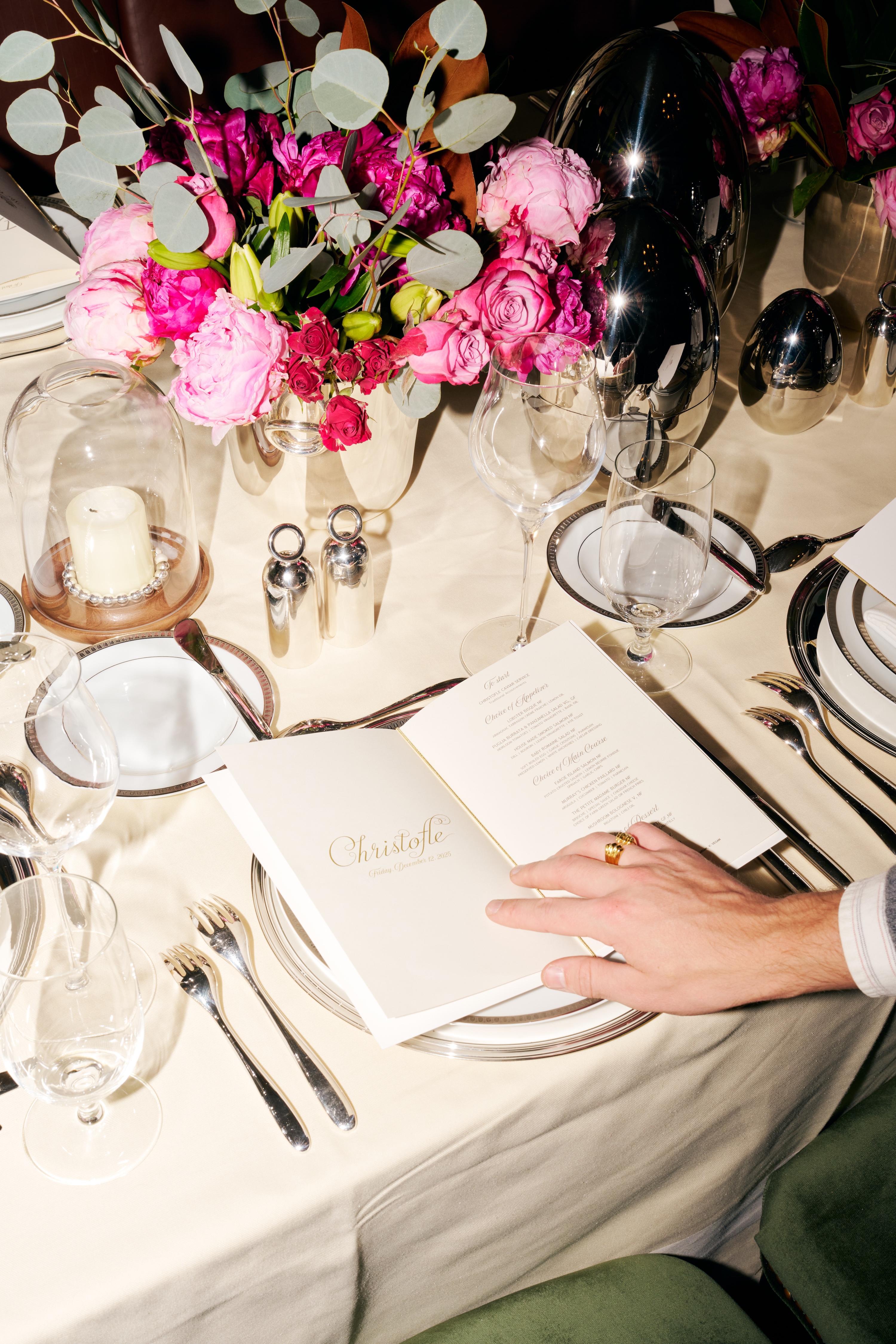


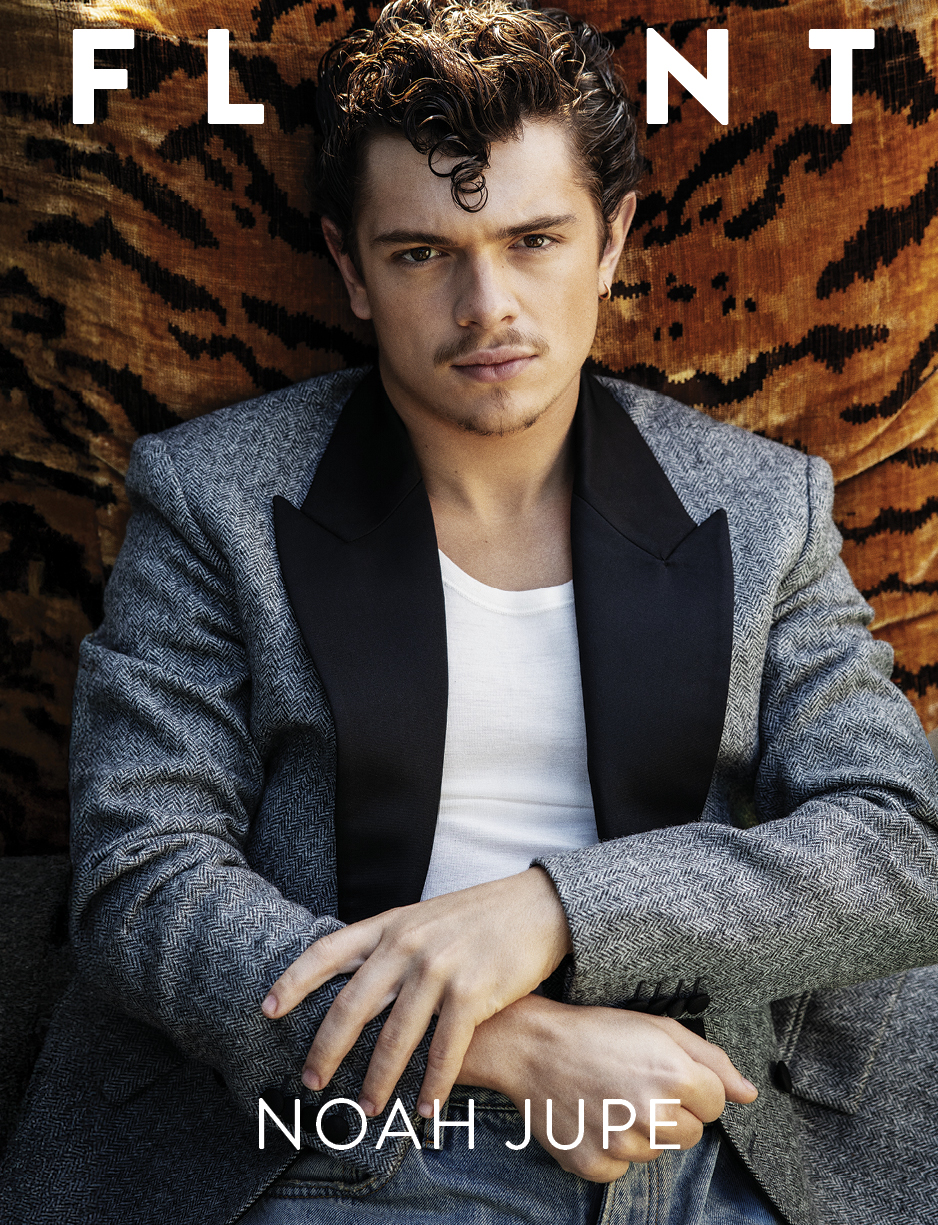
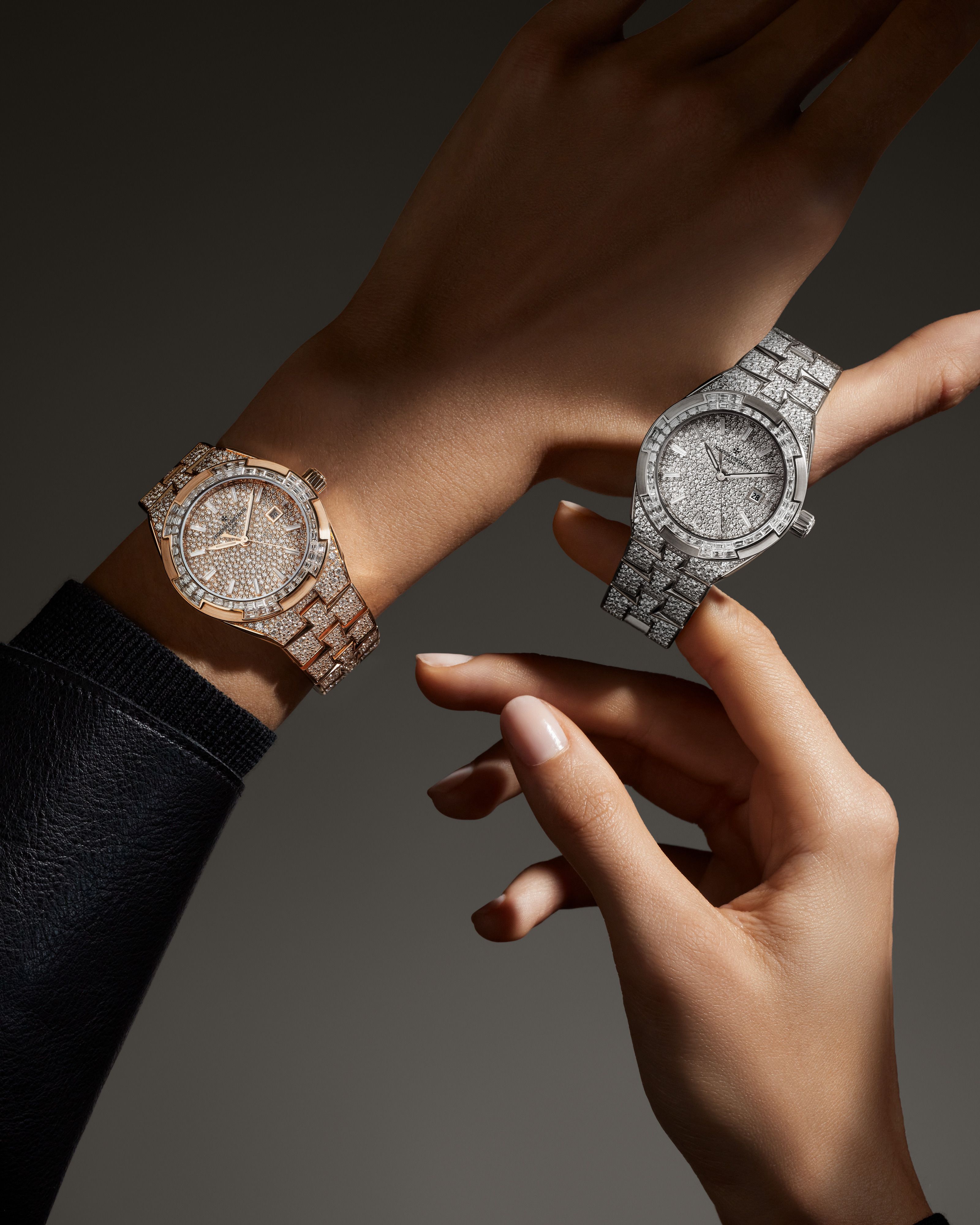

.JPG)
.jpg)
